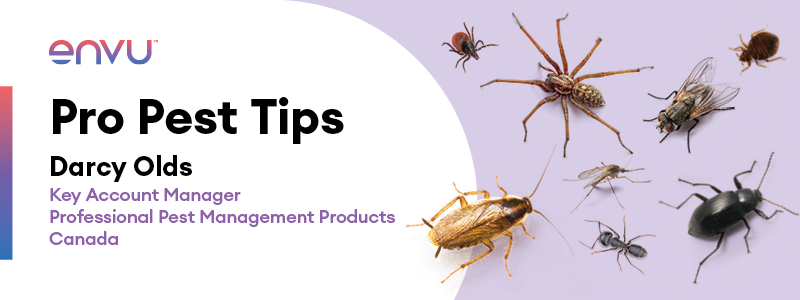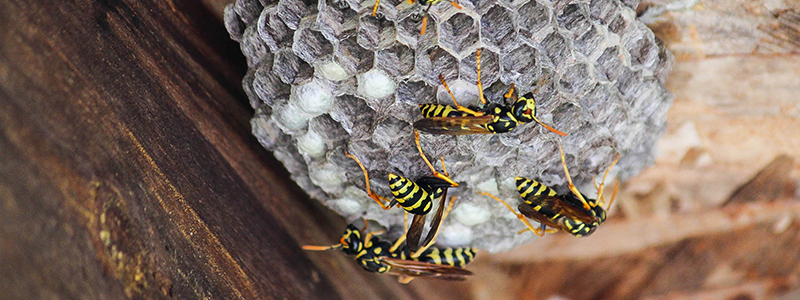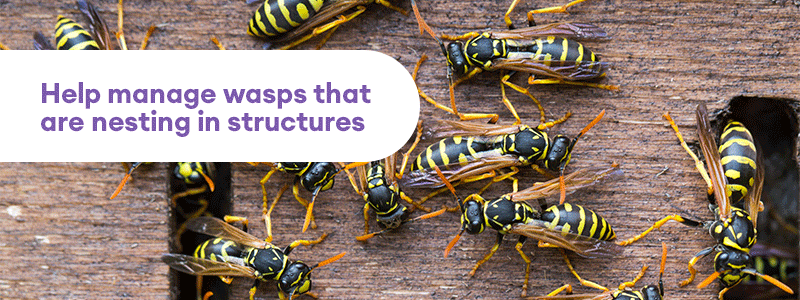Wasps – both a nuisance and a health concern
As we move into late summer, wasps can become more of a nuisance for homeowners and their family members. They can also pose a major health concern for individuals who are at risk for allergic reactions from the venom in their stings. This is especially dangerous because, unlike bees, wasps can sting their victims multiple times.

Wasp Control: Better Understanding for Better Safety
Common wasps include yellow jackets (Vespula spp.), paper wasps (Polistes spp.) and bald-faced hornets (Dolichovespula maculate). When wasp colonies stop reproducing in late summer, adult wasps can become aggressive as they begin to seek out sugars in fruit, pop cans or other sources. This effort is meant to replace the wasp nectar that is produced by larvae during the reproductive and development period.
Reducing Wasp Interest
Wasp activity close to the home may be reduced by cleaning up garbage and other food attractants. Some minor landscape modifications – such as pruning trees close to the home to reduce sap sources or removing grape vines or other sources of nectar on the home – may help to reduce wasp issues around the property.
Envu Solutions
Drione® Insecticide Dust is recommended for treating wasps that are nesting in voids or structures. Drione is a powerful silica-based desiccant dust with synergized natural pyrethrum that is labelled for control of wasps in wall voids. Drione contains 1% pyrethrins, allowing it to work fast and provide long-lasting control. Drione has been a trusted broad-spectrum insecticide for control of ants, bedbugs, cockroaches, fleas, spiders, crickets and silverfish for many years. It is registered for both indoor use and limited outdoor use on structures.
How to Use Drione® for Wasp Control
It is generally advisable to treat wasp nests in the evening when the insects are less active and have returned to the nest. Apply 0.25 – 0.5 g of Drione per average size nest. To ensure adequate control of wasps in larger nests, apply 1.0 – 2.0 g of Drione per nest. Dust the nest, the entrance and the surrounding area.
Nests in wall voids can be located by listening with your ear against the wall. Drill a hole in the area, apply dust inside, and reseal. For best results, check nests carefully one or two days after treatment to ensure a complete kill, then remove and destroy the nest to prevent emergence of newly hatched insects.
If removal is not feasible, re-treat the nest after seven days if necessary. Care should be taken when treating overhead nests so that neither the product nor the nest falls on anyone standing below. Always use proper eye protection and respiratory protection. Follow all product label directions, which includes wearing proper PPE and not allowing people or pets to enter treated areas until after the dust has completely settled.
For more information about wasp control download the solution sheet. For product or integrated pest management contact your local Territory Sales Manager.
ALWAYS READ AND FOLLOW PESTICIDE LABEL DIRECTIONS.
EnvuTM, the Envu logo and Drione® are trademarks owned by Environmental Science U.S. LLC or one of its affiliates.
©2023 Environmental Science U.S. LLC. All rights reserved.


